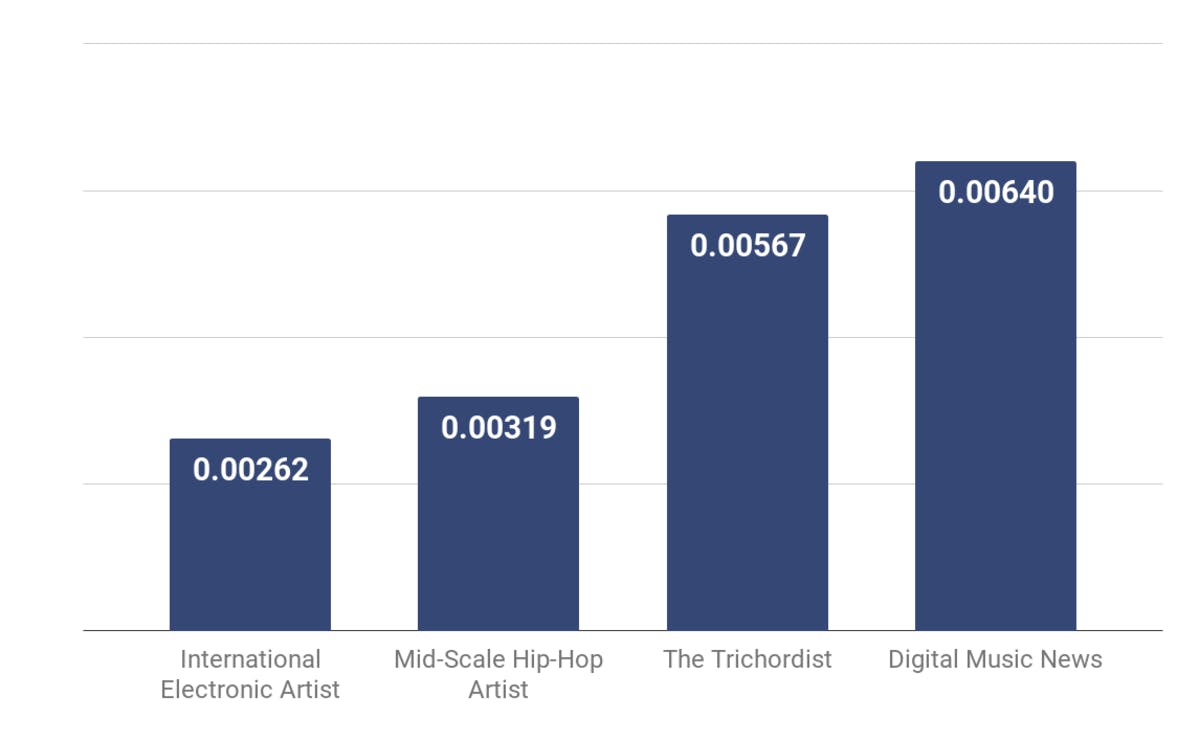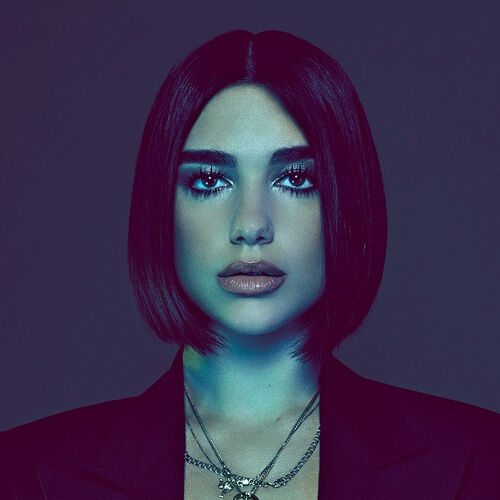Millions of music fans use Deezer over other established services like Spotify & Apple Music, so it’s important to understand how fans are interacting with your music on the platform.
Backstage is Deezer’s answer to Spotify for Artists & Apple Music for Artists. The service provides artists and labels with tools they need to edit their profile and access the listener data they need to plan the next best steps for their marketing strategies.
So how do you access Deezer Backstage? And how does it work? Let’s get into it.
<hr>
How to get verified on Deezer
If you want access to Backstageyou’ll need to have music live on Deezer. Then you can just sign up and verify you're artist ID.
Once you release your music on Deezer, logging into Deezer Backstage is pretty straightforward. Here's how it works.
<br>
1. Go to backstage.deezer.com and click Request Access.
2. Complete & submit the Backstage Info form.
Artist Push, as a promo service, works closely with Deezer to create the best possible strategies for any step you take in the music career. Signing up for our promo packages, specially developed for the curated playlist, artists can choose the number of songs they want to promote and the amount of playlist for placement of their creation. You have to login to accept the terms and conditions of the simple API.
With Deezer's Artist page you can see the artist's number of fans and most popular release (s). Curate your music library and add all your favorite artists or latest Deezer discoveries. You can also check out Discography and explore similar artists we think you'll love with the mix feature. Deezer Originals include Live EPs which artists record in Deezer’s studios and are exclusively available on Deezer. Spotify Singles is pretty much the exact same thing—but for Spotify. In addition, artists can publish an “About” page on their profile, and Spotify’s artist profiles allow artists to. Labels, providers, and managers can access data from your artist profile on a web browser through Deezer’s portal if they have access. Accessing Analytics by Deezer Once an artist profile is approved, artists and managers can download the Analytics by Deezer app.
3. Wait for Deezer to confirm your identity & give access.
<br>
Here’s a quick preview of the info you’ll need for Deezer’s Backstage Info form.
<br>
<center>
</center>
<br>
Once you've submitted the info above, you're done! It might take a few days for access to be granted, but you’ll be notified as soon as you can login.
<br>
Deezer Download
<p><span>TIP: You can also give other people (such as your manager, label or anyone else on your team) access to your Deezer Backstage account. Just add them via the User Manager tab.</span></p>
<br>
<hr>
How to edit your Deezer artist profile
Once you’ve been verified as an artist and got hold of your login details, it’s time to start updating and editing your artist profile.
<br>
Change your Deezer artist profile picture
To update your profile picture, just click on the Artist Edition tab at the top of your screen.
Here you can add, update and change your profile image. Deezer only accepts artist images with a minimum size of 500x500px and 3MB. You’ll also need to upload it as a JPEG or PNG file.
Any image you upload will be cropped into a circle, so keep this is mind when choosing a pic.
<br>
<center>
</center>
<br>
From this section you can also link your Facebook and Twitter profiles as well as create and edit custom “statuses” (much like on social media platforms) to share with your fans.
<br>
Edit your Deezer artist biography
The Artist Edition section of Deezer Backstage also lets you add and update an artist biography in multiple languages including English, French, Portuguese, Chinese, German and more.
Your bio will display in each language depending on who is viewing it, so it might be worth getting it translated if you’re targeting fans in a certain country.
If you’re a new artist, you can learn more about how to write an artist bio here.
<br>
<center>
</center>
<br>
Here you can also add “Highlights”. Any songs you add to Highlights will be featured more prominently on your Deezer profile. Be aware however, that Deezer prioritises highlighting new music for the first 30 days after release.
<hr>
<br>
How to view music analytics on Deezer
If you head to the Analytics tab at the top of Deezer Backstage dashboard, you can delve into all sorts of interesting data around your music.

<br>
<center>
</center>

<br>
Deezer Backstage offers info on the following data points which can all be filtered by timeframes and releases:
<p>- Total streams<br><br>- Unique listeners<br><br>- Average daily listeners<br><br>- Playlist features<br><br>- Top countries & cities<br><br>- Best performing tracks</p>
<br>
Artist analytics services like Deezer can really help understand your audience and optimise your marketing campaigns. With this data to hand, it’s much easier to deep dive into exactly how your music is performing on Deezer and where it's having the biggest impact.
<br>
Have you used Deezer Backstage to plan your marketing campaigns? Or have you any other tips to share around promoting music on Deezer? Let us know in the comments below.
The Curse of Music Streaming
I’m an indie band loyalist. Forager of the unknown. Underground scene stalker. Like to think indie bands are my little secret. Bittersweet when they become mainstream but fine, happy for them anyway.
And in all my years following indie bands, I’ve noticed something that doesn’t seem to add up.
Indie bands fill concert venues to the brim, their merchandise sell like crazy, and their songs stream non-stop. But despite years in the grind and with such huge followings, they’re still juggling multiple jobs and sleeping a few hours a night in time for their day jobs.

Meanwhile, on the other side of the world the kings and queens of pop and hip hop are making millions as top streamed artists. Artists who’ve never made it to my indie radar playlists nor to those of my friends’.
Point is, the stark realities amongst musicians make me think about how much streaming services pay artists through their labels and providers. How fair are they to listeners’ choices and the artists they support?
Let the music gods rain down on all of us.
Here’s the thing:
Between you and the artists you listen to, is a matrix of streams, algorithms and systems that decide where your music playing leads to. Did you think that the earnings from the music you play actually go to the artists you support? Chances are, you’re helping fund a pop star’s next tour.
Fact: Major streaming services do not actually pay artists based on how much of their music you stream as an individual, but on how much their music is streamed within the entire count of streams. Bringing us to the bottom line: your money may not go to the artists you enjoy.
Where is the fairness in all of this?
The starving artist is no romantic story.
There’s nothing romantic about it when you feel like writing music is like pushing against a wall. It’s a vicious cycle. You spend to make songs, your songs get streamed, you get nothing back from your streams, but you can’t stop creating music or you become irrelevant.
We like rags to riches stories when a happy ending makes us feel good. But for the vast majority of musicians, the daily grind becomes a lifelong grind. And for most of us, that happy ending never comes.
Am I cursed forever?
Maybe there is a way out of this vicious cycle. That I don’t have to tell my future kids and kids’ kids that pursuing music is pointless. But we can’t wait much longer or that musical divide will become a deep, dark chasm, a gap too distant to bridge.
If we start asking for more transparency and accountability now, we can spare ourselves that reality. There could be a better way of doing things with a user-centric payment system (UCPS), a fairer way to support the artists we listen to. It starts with everyone in the industry supporting UCPS : streaming platforms, labels, providers, artists, listeners. With UCPS we can change how music history is written.
A fair future
We all talk about supporting artists, valuing their craft, fair pay. When in truth, the system today is not built to support our choices and the artists we enjoy. We celebrate the victories of musicians who’ve made it, but forget about those who don’t benefit from the system’s bias. A bias that helps some but leaves others in a hole.
It wouldn’t be as bleak a picture if I were just an outsider looking in. But as an artist, I’ve seen so many musician friends pack up their gear and give up their careers, or work the oddest jobs to keep them going. Likewise for my band, despite thousands of followers and millions of streams, payouts from streaming is still hardly enough to fund our next song.
Don’t get me wrong – UCPS isn’t going to change our lives overnight. It’s one of many things that needs to be fixed in the music industry. But as a step in the direction of a fair future, a step towards lifting this curse, it’s one we should take.
Deezer Artist Search
The user centric payments system (UCPS) is an initiative kicked off by Deezer in 2017. A user centric payment model would restructure the current way of allocating royalties for music streaming. Today, royalties are allocated based on the overall market share on the platform. Under a user centric model, royalties would be allocated based directly on each listener’s streams, creating a fair environment for all artists and building a direct connection between fans and musicians. Support your choice of artists by supporting Deezer’s initiative for a UCPS pilot in 2021.
Related Posts
